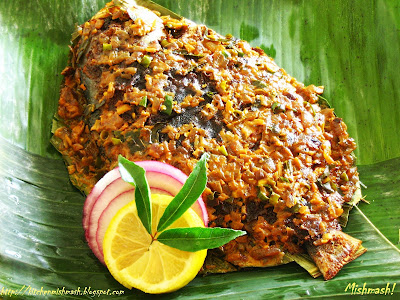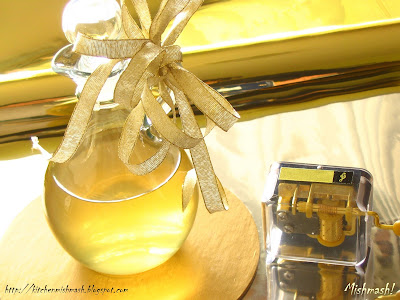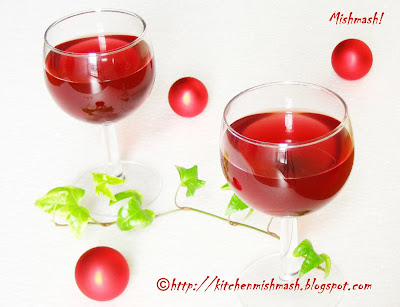 There is only one person whom I miss the most in my life, my grandma whom I call Amma. If the time machine were a reality, then I would rewind and go back to tell her how much she meant to me and how much I loved her! I knew she was a part of me but never realised the depth of the bonding we shared until she left us 4 years ago! I never had a closure, I could not bid farewell to her, I was not there at the time of her death nor at the funeral....and towards the end she had lost her memory too, so I don’t even know if she was aware of my occasional visits to her, whenever I came home during my holidays.....she comes in my dreams and thoughts quite often and at times I miss her a lot..I think about the days I spent with her...my summer holidays... my weekends during my childhood....her image is still crystal clear in my mind; standing in front of the gate anxiously waiting for me to get back from the school ..she used to send her maid to pick me up from the school and accompany me till I reached home safe..and I am sure she enjoyed those days, when both of us waited for the mobile bakery man to buy hot puffs and samosas and some sweets, because her kids, that’s my mother and her siblings never allowed her to eat any sweets coz of her high blood sugar. I learned the basics of bargaining from her; it was a pleasure and a great time pass to watch her bargain with the fish vendors...and at the end of all that intense bargaining, sometimes she offered them a cup of tea or some breakfast occasionally...my exposure to different varieties of fish started there. The root cause of my obsession with cleanliness and organizing traces back to her; she had a spotless kitchen and home and a perfectly pressed and arranged wardrobe. Even at the age of 70s, she wore neatly pressed clothes at home and such thoughts help me neglect my obsession for pressing each and every piece of cloth, including my apron and kitchen towels !! I have great respect for her..she was a strong woman who raised her three kids all alone after losing her partner at a very young age. She was very generous and affectionate too...I wish she had met CJJ before she left us, in which case, he would have been her favourite. My mother is a great cook, nevertheless, at times I tell her some of her preparations don’t even come close to that of Amma’s. She was a fabulous cook...she did not have an oven, but she used to bake cakes with a stove top vessel; she never used to frequent Chinese restaurants but she used to make the best fried rice and ofcourse the authentic kerala dishes and snacks....the days I spent with her are some of the sunken treasures of my life and when I dive into those memories, I get lost somewhere........!!
There is only one person whom I miss the most in my life, my grandma whom I call Amma. If the time machine were a reality, then I would rewind and go back to tell her how much she meant to me and how much I loved her! I knew she was a part of me but never realised the depth of the bonding we shared until she left us 4 years ago! I never had a closure, I could not bid farewell to her, I was not there at the time of her death nor at the funeral....and towards the end she had lost her memory too, so I don’t even know if she was aware of my occasional visits to her, whenever I came home during my holidays.....she comes in my dreams and thoughts quite often and at times I miss her a lot..I think about the days I spent with her...my summer holidays... my weekends during my childhood....her image is still crystal clear in my mind; standing in front of the gate anxiously waiting for me to get back from the school ..she used to send her maid to pick me up from the school and accompany me till I reached home safe..and I am sure she enjoyed those days, when both of us waited for the mobile bakery man to buy hot puffs and samosas and some sweets, because her kids, that’s my mother and her siblings never allowed her to eat any sweets coz of her high blood sugar. I learned the basics of bargaining from her; it was a pleasure and a great time pass to watch her bargain with the fish vendors...and at the end of all that intense bargaining, sometimes she offered them a cup of tea or some breakfast occasionally...my exposure to different varieties of fish started there. The root cause of my obsession with cleanliness and organizing traces back to her; she had a spotless kitchen and home and a perfectly pressed and arranged wardrobe. Even at the age of 70s, she wore neatly pressed clothes at home and such thoughts help me neglect my obsession for pressing each and every piece of cloth, including my apron and kitchen towels !! I have great respect for her..she was a strong woman who raised her three kids all alone after losing her partner at a very young age. She was very generous and affectionate too...I wish she had met CJJ before she left us, in which case, he would have been her favourite. My mother is a great cook, nevertheless, at times I tell her some of her preparations don’t even come close to that of Amma’s. She was a fabulous cook...she did not have an oven, but she used to bake cakes with a stove top vessel; she never used to frequent Chinese restaurants but she used to make the best fried rice and ofcourse the authentic kerala dishes and snacks....the days I spent with her are some of the sunken treasures of my life and when I dive into those memories, I get lost somewhere........!!
Grandma was from a quaint little town in Kerala, named Alappuzha or Alleppey which is labeled as the ‘Venice of the east’ because of its breathtaking view of the backwaters and house-boats; it’s a beautiful small town, famous for its network of canals and lagoons, crisscrossing the center of the town as well as boat races and coir products. Mean Pollichathu (Roasted Fish in a Banana leaf Wrap) is a ‘must try’ local delicacy which is generally prepared with a fresh catch of karimeen (Pearl Spots), marinated with various spices and a ground paste of pearl onion/small onions, green chilies, ginger, garlic, tomatoes and coconut milk and then cooked in banana leaf wraps. My grandma’s preparation is slightly different from this widely used recipe and this is my 4th attempt at reproducing her signature dish with certain changes adopted in the cooking method to suit my cooking conditions here in US; grandma used to do this at one shot where as my method consist of three stages. Recipe follows: -

Ingredients (Approx. for the size of fish shown in the picture)
Step 1: - Ingredients for Marinating and roasting the fish:
- 1 whole fish cleaned, preferably Karimeen (pearl Spots); Pomfret,Tilapia
- 3 tsp chilli powder
- ¼ tsp turmeric powder
- ½ tsp pepper powder
- ¼ tsp ginger paste
- ¼ tsp garlic paste
- 1 tbsp lemon juice (optional)
- Salt to taste
- ¼ cup coconut oil (or vegetable oil) for frying
- 1 cup finely chopped red pearl onions/small onions (around 20-22 nos)
- 1 ¼ tbsp finely chopped ginger
- 6-8 finely chopped green chillies
- 1 sprig of curry leaves
- A pinch of turmeric powder
- A pinch of chilli powder
- 2 tbsp coconut oil (or vegetable oil)
- ¼ cup thick coconut milk
- Salt to taste
- Banana Leaf - big enough to wrap the fish from all the sides.
- Make 4-5 slits on the cleaned fish; mix chilli powder, turmeric powder, pepper powder, ginger and garlic paste, lemon juice and salt with 1-2 tsp of water to make a thick paste and marinate the fish evenly on both sides and keep it for atleast 2 hours. The slits made on the fish will help the marinade to penetrate into the fish during this time.
- Heat oil in a flat non-stick pan and place the fish, when the oil is steaming hot. Shallow fry the fish at medium heat by flipping each side when it is almost done; do not make it too crispy and do not overcook ; it should be soft and moist as the same fish is cooked again at the final stage. When the fish is done, (at this stage the oil will stop spluttering) transfer it to the gravy on the banana leaf,instructions for which follow.
- Heat 2 tbsp oil in a pan and sauté the chopped small onions, ginger, green chilies and curry leaves, in low heat, until they are cooked and golden brown in colour and add a pinch of turmeric powder and chilli powder to get a roasted colour. At this stage, add the thick coconut milk (Users of canned coconut milk need to dilute it by adding some water- for eg: 3 tbsp of coconut milk & add 2tbsp water) and salt and mix well to make the gravy; just combine the gravy well and turn off the stove; do not boil/cook it at all.
- Mildly wilt the fresh and washed banana leaf by keeping it on a low flame; Place it in a large flat non-stick pan; Make a thin bed with half of the gravy and keep the roasted fish and top it with the rest of the gravy. Cover and wrap the fish completely by folding the banana leaf, from all the sides and place a lid on top and let it cook for 10-15 minutes on low flame, until the gravy is thick.
- Serve hot with rice. You may wilt one more banana leaf and wrap it again before serving, to make it look like 'banana leaf parcels'.
It is very different from the usual fish preparations like fish curry and fish fry. It is not very spicy but still I suggest reducing the number of green chilies for those who cannot eat hot n spicy type of food at all. And if you are lucky to prepare this with a fresh catch of Karimeen (Pearl Spots), then you will notice an oil coating on the sides of the fish along with the gravy, which is not there in my picture as I used a different fish. Oil coating mainly depends on a fatty fish and also on the freshly squeezed coconut milk. Instead of using one whole fish, the same preparation can be done with fish steak pieces, wrapped individually in banana leaf, to serve for a group. This is one of the most famous central Kerala delicacy that adorns the dining table at the time of guest visits as well as X’mas and Easter lunches.
 This post is a tribute to my grandma and hence my contribution for FAHC Campaign and Group Cookbook Project. Hope it meets all the criteria.
This post is a tribute to my grandma and hence my contribution for FAHC Campaign and Group Cookbook Project. Hope it meets all the criteria.
Thanks for reading this loooooooong post :)
Shn
 This post is a tribute to my grandma and hence my contribution for FAHC Campaign and Group Cookbook Project. Hope it meets all the criteria.
This post is a tribute to my grandma and hence my contribution for FAHC Campaign and Group Cookbook Project. Hope it meets all the criteria.Thanks for reading this loooooooong post :)
Shn











